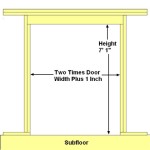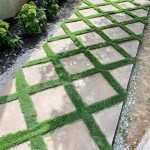Faux Stone Patio: Aesthetics, Durability, and Installation Considerations
A patio serves as an extension of the interior living space, providing an area for relaxation, entertainment, and outdoor dining. Natural stone, renowned for its beauty and longevity, is a popular choice for patio construction. However, the cost and complex installation of natural stone can be prohibitive for some. Faux stone, also known as manufactured stone, offers a compelling alternative. It replicates the appearance of natural stone while often being more affordable and easier to install. This article will explore the advantages and disadvantages of faux stone patios, discussing key considerations for material selection, installation techniques, and long-term maintenance.
Faux stone is typically manufactured from a mixture of Portland cement, aggregates, and pigments. The mixture is poured into molds that are designed to replicate the textures and colors of various natural stones, such as flagstone, slate, and limestone. The resulting product offers a realistic aesthetic at a fraction of the cost of quarried stone. Moreover, faux stone is often lighter than natural stone, which can simplify installation and reduce the need for extensive structural support.
Cost-Effectiveness and Material Properties
One of the primary advantages of faux stone is its cost-effectiveness. The manufacturing process is generally less expensive than quarrying, cutting, and transporting natural stone. This translates to lower material costs for the patio project. Furthermore, faux stone is often available in a wider range of colors and styles than locally sourced natural stone, providing greater design flexibility.
The material properties of faux stone are also noteworthy. It is typically more consistent in size and shape than natural stone, which can simplify the installation process. The uniform dimensions allow for tighter joints and a smoother, more even surface. This consistency also reduces the amount of cutting and waste required during installation, further contributing to cost savings.
However, it is crucial to consider the durability of faux stone in relation to the specific climate and usage conditions. While manufactured to withstand outdoor elements, some faux stone products may be more susceptible to fading, chipping, or cracking than natural stone, particularly in regions with harsh winters or intense sun exposure. It is essential to choose a high-quality faux stone product that is specifically designed for outdoor use and can withstand the environmental conditions in the area.
The weight of faux stone, typically lighter than natural stone, is another significant factor. This reduced weight can be advantageous in situations where the underlying structure has limited load-bearing capacity. It also makes the material easier to handle and transport, reducing labor costs and installation time.
In terms of environmental impact, the production of faux stone requires energy and resources. However, some manufacturers utilize recycled materials in their products, reducing the overall environmental footprint. Furthermore, the reduced transportation costs associated with faux stone, compared to natural stone sourced from distant quarries, can also contribute to lower carbon emissions.
Installation Techniques and Substrate Preparation
Proper installation is critical to the longevity and performance of a faux stone patio. The underlying substrate must be stable, well-drained, and properly prepared to prevent shifting, settling, and cracking. A typical installation involves several key steps, beginning with excavation and grading.
The area for the patio should be excavated to a depth that allows for a sufficient base of compacted gravel and a layer of sand or setting bed. The depth of the excavation will depend on the local soil conditions and the expected load on the patio. A poorly drained soil may require a deeper excavation and the installation of a drainage system to prevent water accumulation beneath the patio surface.
After excavation, a layer of compacted gravel is installed. This gravel layer provides a stable base for the patio and helps to distribute the load evenly. The gravel should be compacted in layers using a plate compactor to ensure proper density. The thickness of the gravel layer will vary depending on the soil conditions and the expected load, but a minimum of four inches is generally recommended.
Following the gravel base, a layer of sand or a setting bed material is applied. This layer provides a level surface for the faux stone and allows for fine adjustments during installation. The sand or setting bed should be evenly distributed and compacted to create a smooth and stable surface. Some installers prefer to use a polymeric sand, which helps to stabilize the joints between the stones and prevent weed growth.
With the base properly prepared, the faux stone can be laid. The stones should be carefully placed and aligned, ensuring tight joints and a consistent surface. A rubber mallet can be used to gently tap the stones into place. It is important to use a level to ensure that the patio surface is flat and free of any significant dips or rises.
The joints between the stones can be filled with sand, polymeric sand, or mortar, depending on the desired aesthetic and level of durability. Sand or polymeric sand is typically used for dry-laid patios, while mortar is used for wet-laid patios. When using mortar, it is essential to follow the manufacturer's instructions and to protect the patio from rain or excessive sunlight during the curing process.
For patios that are exposed to heavy foot traffic or vehicular traffic, it may be necessary to install a concrete slab beneath the faux stone. A concrete slab provides a rigid and stable base that can withstand significant loads. The slab should be properly reinforced with rebar and allowed to cure completely before the faux stone is installed.
Maintenance and Longevity Considerations
Regular maintenance is essential to preserving the appearance and extending the lifespan of a faux stone patio. The specific maintenance requirements will depend on the type of faux stone used, the climate, and the level of usage. However, some general guidelines apply to most installations.
Periodic cleaning is necessary to remove dirt, debris, and stains. A garden hose with a spray nozzle can be used to rinse the patio surface. For more stubborn stains, a mild detergent or specialized stone cleaner can be used. It is important to avoid using harsh chemicals or abrasive cleaners, as these can damage the surface of the faux stone.
The joints between the stones should be inspected regularly and repaired as needed. Over time, sand or polymeric sand can erode or wash away, leaving gaps that can allow weeds to grow and compromise the stability of the patio. Replenishing the sand or polymeric sand in the joints will help to maintain the integrity of the patio surface.
For wet-laid patios with mortar joints, it is important to inspect the mortar for cracks or deterioration. Cracked or crumbling mortar should be removed and replaced with fresh mortar. This will help to prevent water from infiltrating beneath the patio surface and causing damage.
Sealing the faux stone can provide an additional layer of protection against stains, fading, and water damage. A variety of sealers are available, each with its own specific properties and application requirements. It is important to choose a sealer that is compatible with the type of faux stone used and to follow the manufacturer's instructions carefully.
In regions with harsh winters, it may be necessary to take additional precautions to protect the patio from freeze-thaw damage. De-icing salts should be used sparingly, as they can damage the surface of the faux stone and the mortar joints. It is also important to clear snow and ice from the patio surface promptly to prevent water from seeping into cracks and freezing.
Proper drainage is crucial to preventing water damage. Ensure that the patio surface slopes away from the house to prevent water from pooling near the foundation. Regularly inspect and clean any drainage systems to ensure that they are functioning properly.
By following these maintenance guidelines, a faux stone patio can provide years of enjoyment and enhance the beauty of the outdoor living space. The initial investment in a high-quality faux stone product and proper installation techniques will pay off in the long run with reduced maintenance costs and a longer lifespan for the patio.

Manufactured Stone Pavers Walls Flagging Veneer

Stone Patios Stamped Concrete Mimics Pavers Network

How To Fake A Beautiful Stone Patio For Just 50 Stones Flagstone

Patio Designs With Faux Stone And Brick Traditional Charlotte By Barron Houzz Ie

Stone Patios Stamped Concrete Mimics Pavers Network

Out Door Kitchen Faux Stone Patio Stones Flooring

Bill S Faux Stone Patio Siding Accent Wall Genstone

Create Your Own Faux Stone Walkway For Less Than 40

Choosing Stone Veneer For Outdoor Bbq Or Grilling Island

How To Fake A Beautiful Stone Patio For Just 50 Hometalk








